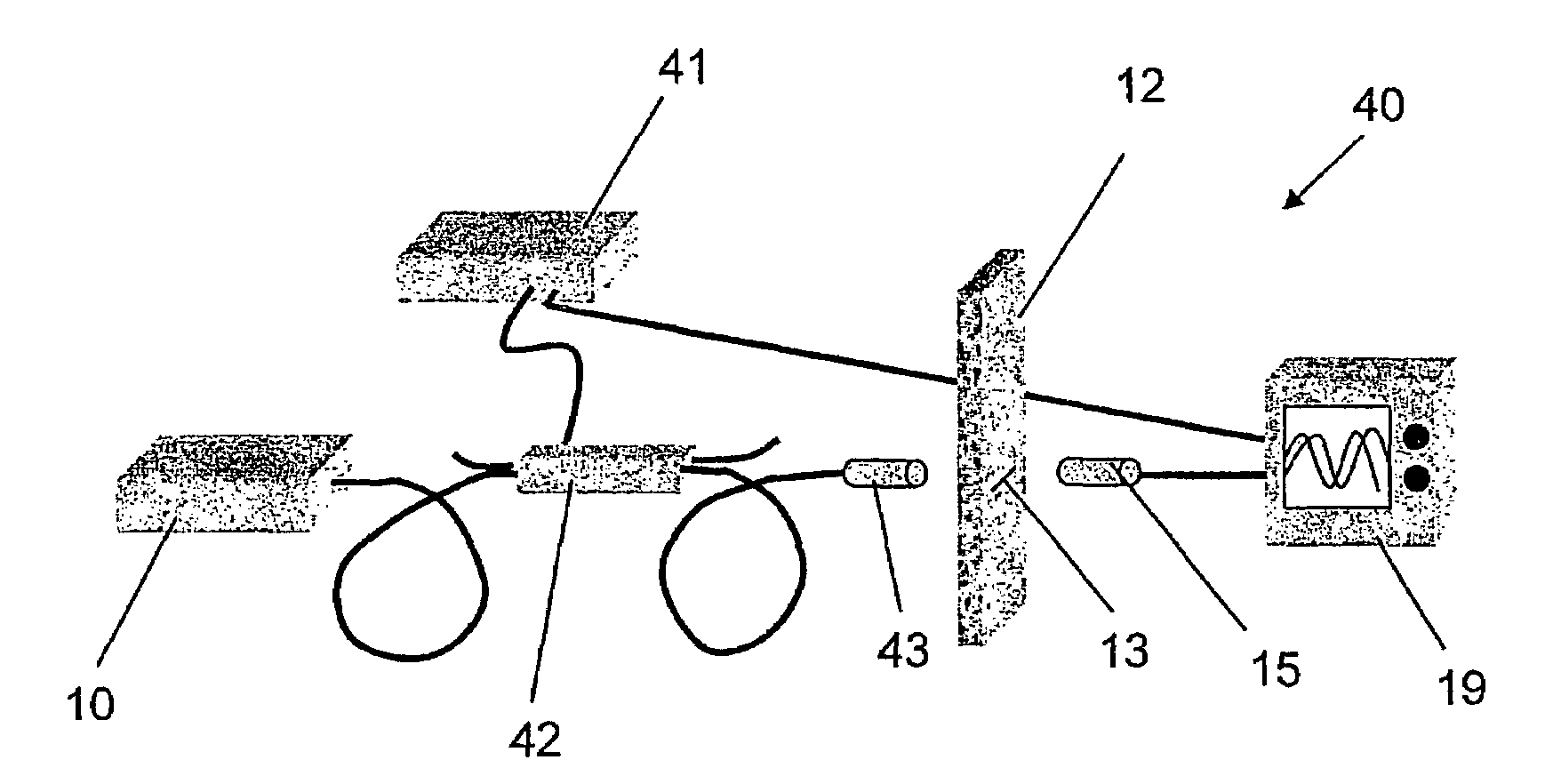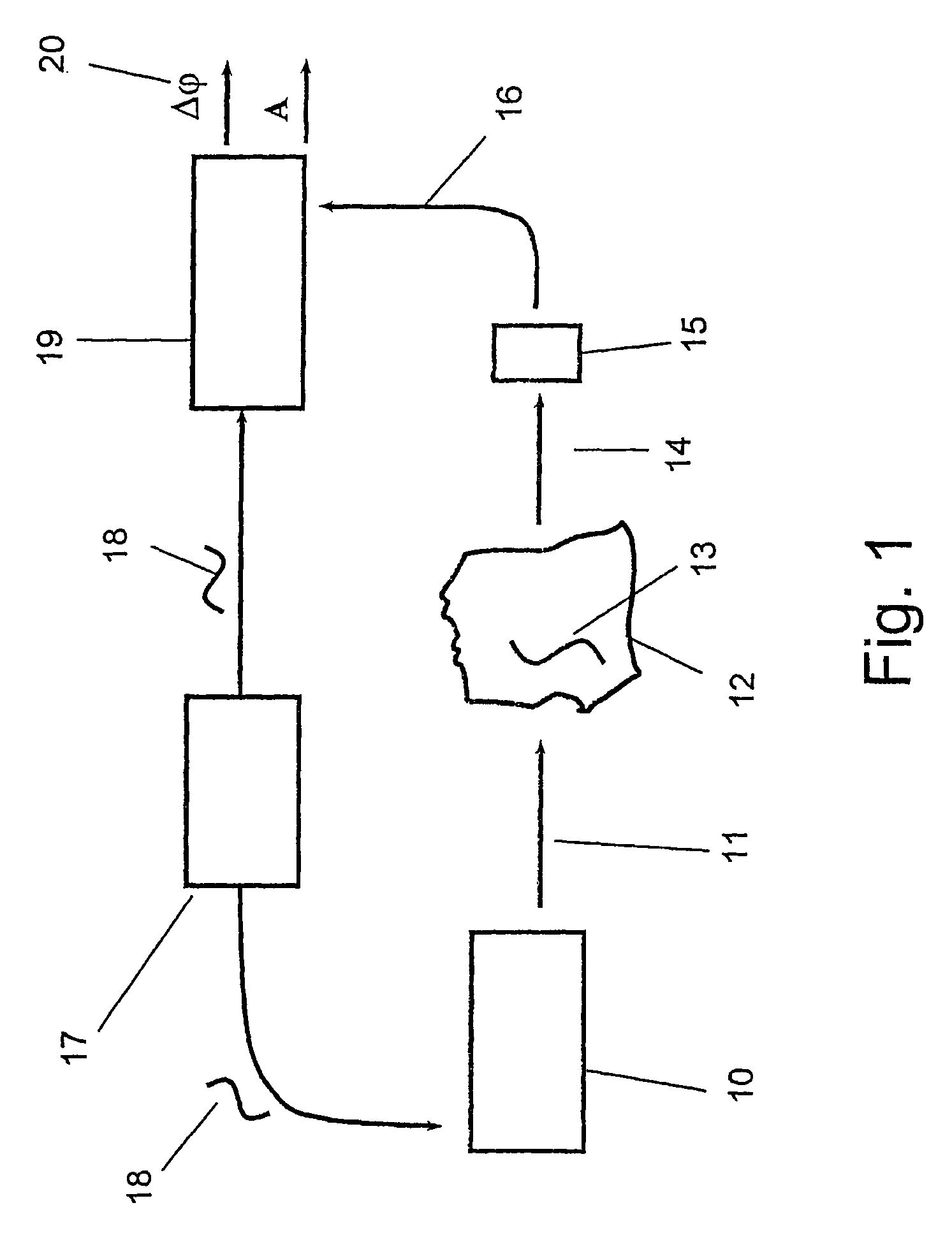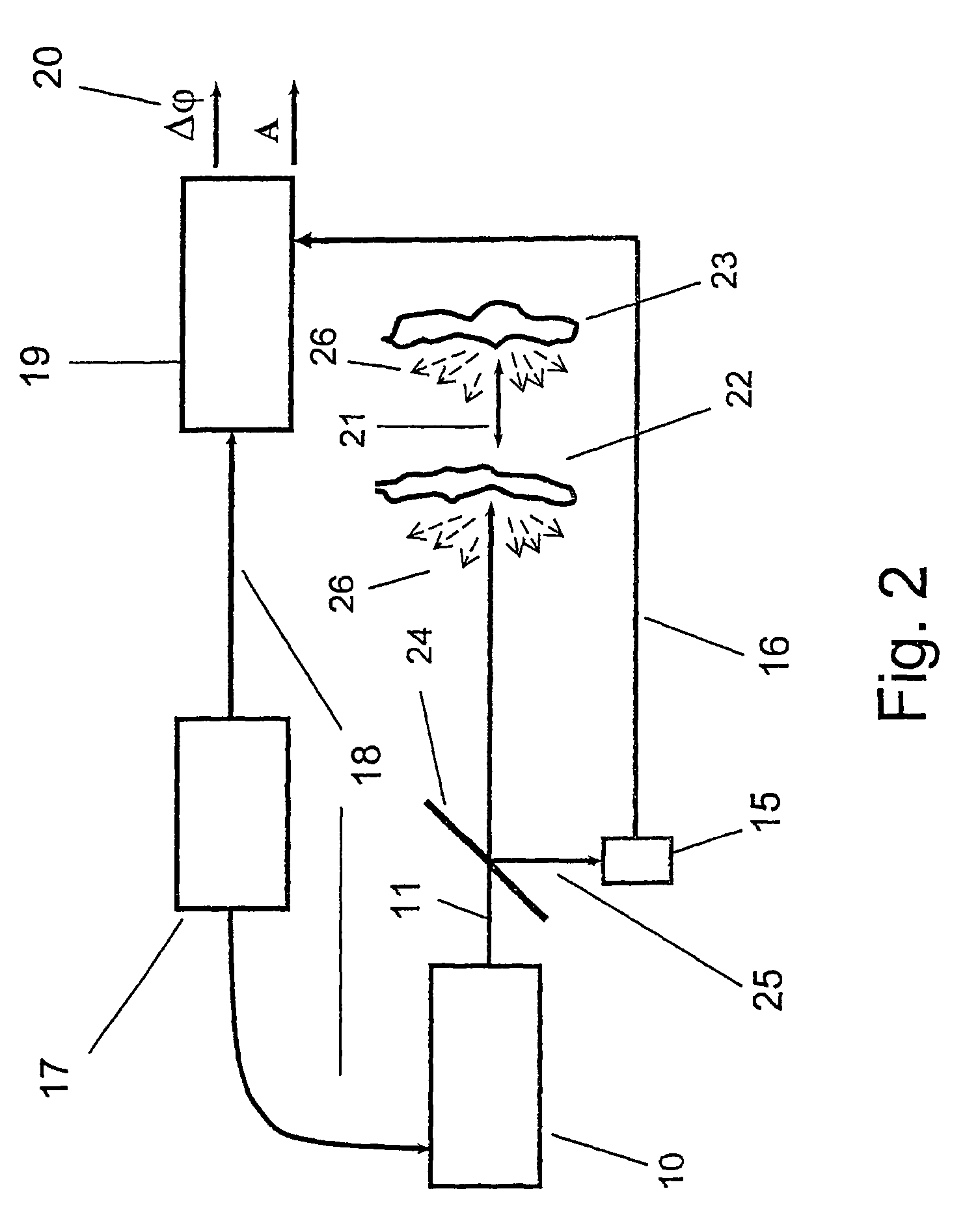Method and apparatus for imaging through scattering or obstructing media
a technology of optical properties and media, applied in the field of optical imaging, can solve the problems of inability to use many cases, few reliable noninvasive techniques, and widespread in everyday life to measure the optical properties of internal organs, and achieve the effect of suitable spectral resolution
- Summary
- Abstract
- Description
- Claims
- Application Information
AI Technical Summary
Benefits of technology
Problems solved by technology
Method used
Image
Examples
Embodiment Construction
[0028]In this specification the terms “turbid medium”, “scattering medium”, “optically scattering medium”, “optically turbid medium”, and other terms having a similar meaning are used interchangeably.
[0029]FIG. 1 describes a transmission system used for seeing through a turbid optical medium to acquire an image of an object obscured by the medium. In the preferred embodiment shown in FIG. 1, a CW frequency-tunable laser 10 is modulated at an RF frequency Ω through the use of a RF modulation source 17, which modulates the laser with the electronic sinusoidal signal 18. In the weak modulation regime, the modulated light field 11 is
[0030]Ein(t,ωj)≅ⅇⅈωjt(1+acosΩt)=ⅇⅈωjt[1+a2(ⅇⅈΩt+ⅇ-ⅈΩt)][1A]
where ωj is the optical carrier frequency and α<<1 (for simplicity, unit amplitude at the carrier frequency is assumed). It should be noted that the weak modulation regime is neither an essential nor a simplifying assumption; similar conclusions are obtained for deep modulati...
PUM
| Property | Measurement | Unit |
|---|---|---|
| frequency- | aaaaa | aaaaa |
| frequency- | aaaaa | aaaaa |
| length | aaaaa | aaaaa |
Abstract
Description
Claims
Application Information
 Login to View More
Login to View More - R&D
- Intellectual Property
- Life Sciences
- Materials
- Tech Scout
- Unparalleled Data Quality
- Higher Quality Content
- 60% Fewer Hallucinations
Browse by: Latest US Patents, China's latest patents, Technical Efficacy Thesaurus, Application Domain, Technology Topic, Popular Technical Reports.
© 2025 PatSnap. All rights reserved.Legal|Privacy policy|Modern Slavery Act Transparency Statement|Sitemap|About US| Contact US: help@patsnap.com



